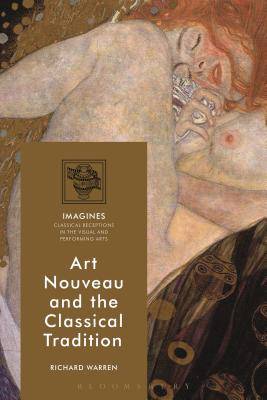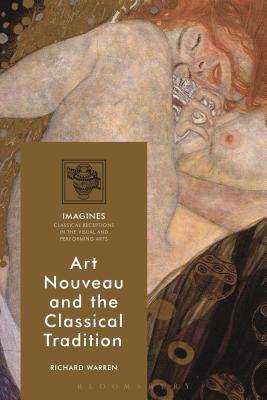
Bedankt voor het vertrouwen het afgelopen jaar! Om jou te bedanken bieden we GRATIS verzending (in België) aan op alles gedurende de hele maand januari.
- Afhalen na 1 uur in een winkel met voorraad
- In januari gratis thuislevering in België
- Ruim aanbod met 7 miljoen producten
Bedankt voor het vertrouwen het afgelopen jaar! Om jou te bedanken bieden we GRATIS verzending (in België) aan op alles gedurende de hele maand januari.
- Afhalen na 1 uur in een winkel met voorraad
- In januari gratis thuislevering in België
- Ruim aanbod met 7 miljoen producten
Zoeken
Omschrijving
Art Nouveau was a style for a new age, but it was also one that continued to look back to the past. This new study shows how in expressing many of their most essential concerns - sexuality, death and the nature of art - its artists drew heavily upon classical literature and the iconography of classical art. It challenges the conventional view that Art Nouveau's adherents turned their backs on Classicism in their quest for new forms. Across Europe and North America, artists continued to turn back to the ancient world, and in particular to Greece, for the vitality with which they sought to infuse their creations.
The works of many well-known artists are considered through this prism, including those of Gustav Klimt, Aubrey Beardsley and Louis Comfort Tiffany. But, breaking new ground in its comparative approach, this study also considers some of the movement's less well-known painters, sculptors, jewellers and architects, including in central and eastern Europe, and their use of classical iconography to express new ideas of nationhood. Across the world, while Art Nouveau was a plural style drawing on multiple influences, the Classics remained a key artistic vocabulary for its artists, whether blended with Orientalist and other iconographies, or preserving the purity of classical form.
The works of many well-known artists are considered through this prism, including those of Gustav Klimt, Aubrey Beardsley and Louis Comfort Tiffany. But, breaking new ground in its comparative approach, this study also considers some of the movement's less well-known painters, sculptors, jewellers and architects, including in central and eastern Europe, and their use of classical iconography to express new ideas of nationhood. Across the world, while Art Nouveau was a plural style drawing on multiple influences, the Classics remained a key artistic vocabulary for its artists, whether blended with Orientalist and other iconographies, or preserving the purity of classical form.
Specificaties
Betrokkenen
- Auteur(s):
- Uitgeverij:
Inhoud
- Aantal bladzijden:
- 232
- Taal:
- Engels
- Reeks:
Eigenschappen
- Productcode (EAN):
- 9781474298551
- Verschijningsdatum:
- 14/12/2017
- Uitvoering:
- Hardcover
- Formaat:
- Genaaid
- Afmetingen:
- 156 mm x 234 mm
- Gewicht:
- 503 g

Alleen bij Standaard Boekhandel
+ 440 punten op je klantenkaart van Standaard Boekhandel
Beoordelingen
We publiceren alleen reviews die voldoen aan de voorwaarden voor reviews. Bekijk onze voorwaarden voor reviews.









